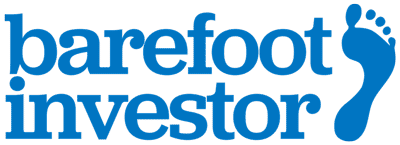The $31,203 Road Test
Are you looking for Australia’s biggest and best super fund?
Well, that’s what we’re going to cover today.
You see, the front page of the Australian Financial Review this week said that NAB is the new king of super, claiming the bragging rights of Australia’s biggest retail super fund.
It’s a fair bet that either you, or one of your family, or at least one of your ex-boyfriends, is with NAB.
Now I wouldn’t be doing my job if I didn’t do a road-test on Australia’s biggest retail super fund. So buckle up (because I’m also going to show you how to make $31,203).
Guaranteed.
The Holden Cruze of Super Funds NAB’s super offering (from this week, branded as ‘MLC Super’) is the financial equivalent of a Holden Cruze.
No-one consciously chooses a Holden Cruze.
It’s just the car that the bored middle-aged woman behind the counter of Budget rent-a-car hands you the keys to. The Cruze is a car that’s foisted upon you. Eventually you’ll get a better one, but right now, well, who gives a toss?
That explains NAB’s super offering right there.
No-one actually does independent research and chooses a NAB fund.
That’s because their performance over the years has been, well, Cruze-like.
According to SuperRatings, over 1, 3, 5 and 7 years, it’s come in near the back of the pack.
That perfectly explains NAB’s hierarchy of needs, which are as follows:
NAB.
NAB Funds Management.
NAB Financial Planner.
NAB Banking (investment loan, mortgages, and credit cards referrals).
Client.
Holden versus Ford
Yet rather than just kick the tyres and drive around the block, I thought I’d line it up in a proper drag race against Australia’s biggest super fund.Hang on, didn’t I say NAB was the biggest?
No, there’s a difference. NAB has been crowing about being the biggest retail super fund (which means it’s run by a financial services company for profit).
The biggest super fund is AustralianSuper, which is an industry fund (i.e. not for profit). It manages $100 billion on behalf of more than 2 million members.
Retail funds have been battling industry funds for years (a real Ford vs Holden battle).
Up until now, industry funds have been out in front, mainly thanks to their lower fees.
Still, the entire industry is as seedy as a night at the dishlickers: Australians are still forking out some of the highest super fees in the world - between 2004 and 2013 the cost of the average fund fell from just 1.4% to 1.2%, even though the total super pool grew from $625 billion to more than $1.6 trillion.
To look at, there’s not much difference between our NAB and AustralianSuper contenders. We’re looking at the ‘balanced’ model for each, which means you’ll get a mix of shares (both Aussie and International), a bit of property, and some bonds and cash.
Where they differ is the sticker price.
AustralianSuper is the poverty pack. You’ll pay an investment fee of 0.57% (which gets the Barefoot rating of “meh” as it’s not the lowest in the market -- not by a long shot), plus a $1.50 per week admin fee. Anyway, on a balance of $50,000, that’s costing you $363 each year.
Now for NAB …Their cheapest option will set you back $623 per annum on the same $50,000 balance.
Next in line is their mainstream model (with leather trim), called ‘MLC Masterkey Fundamentals’, which ups that slightly to $630.
Or, if you’re unlucky to be stuck in one of MLC’s older funds (but still called ‘Masterkey’), get ready to fork out $1,033 in fees every year on a $50,000 balance.If you (or your dad or your uncle) are still in that fund, then somewhere along the line a NAB salesperson took your boss to the corporate box at the footy and got them on the squirt -- in exchange for signing up his entire staff up to a stinker of a corporate super fund.
But maybe that’s about to change ...
“National Australia Bank is combining five of its superannuation funds to create the country's biggest retail fund, promising to share cost reductions from the merger with its 1.3 million super members” said the newspaper this week.
Huh?
“Promising to share cost reductions?”
That didn’t sound very banklike, so I rang up NAB and asked them “specifically how much are you sharing?”
“The majority of our Corporate Super members will receive a 0.04% reduction to their fees… that is the equivalent of $20 per annum on a $50,000 MySuper account balance” said the NAB spokesperson.
That sounds more like it!
The $31,302 Car Crash
When it comes to cars it’s not the driveaway cost that slugs you, what you really need to focus on is your running costs, over years and years and years … it’s the same with super. Let me explain.
Take a kid -- let’s call him Freddy Falcon -- with $10,000 in AustralianSuper.
He’s earning $60,000, and keeps his nose to the grindstone for the next 40 years.When he retires his super balance will be (based on very, very conservative projections)... $286,517 in today’s dollars.
His mate -- Harry Holden -- has the same $10,000, but he goes with MLC MasterKey Super Fundamentals.
He earns the same as Freddy, and works just as long.
And when he clocks off at 60, he’ll pocket $255,314.
In other words, despite being in a balanced fund just like Freddy, he’s $31,203 worse off.
Struth!
That’s enough savings to buy you a Holden Cruze… though I wouldn’t recommend it.
Tread Your Own Path!
